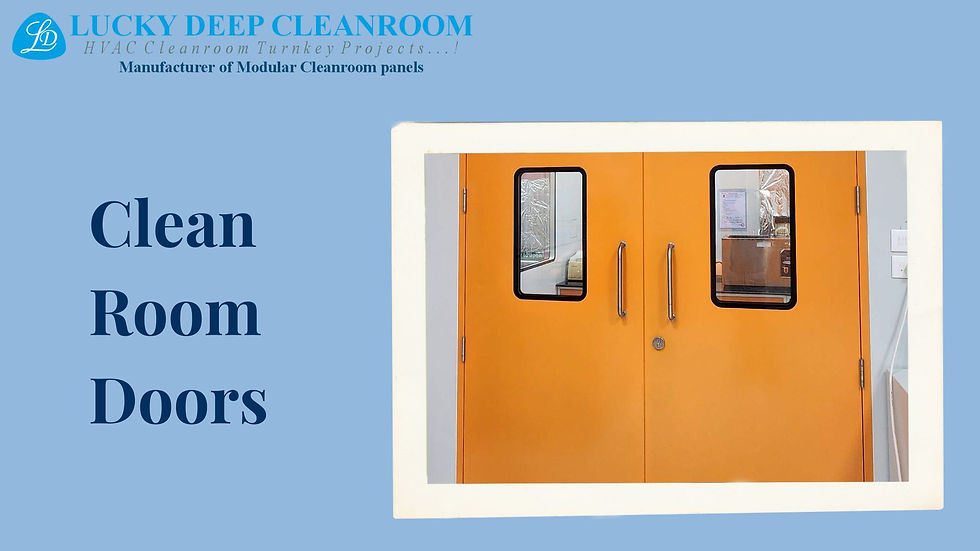The Science Behind Clean Room Doors: Airflow and Contamination Control
- Lucky Deep
- Jan 17
- 2 min read

When it comes to maintaining a sterile and controlled environment, clean room doors play an integral role. These specialized doors are meticulously designed to prevent contamination and ensure proper airflow in industries like pharmaceuticals, electronics, food processing, and healthcare. Understanding the science behind these doors is crucial to optimizing their function and ensuring compliance with stringent cleanliness standards.
What Are Clean Room Doors?
Clean room doors are double-skin doors with or without view panels, constructed similarly to modular panels. The doors are designed to create a seamless barrier, ensuring optimal control over particulate infiltration and air leakage. Their construction involves:
Material of Construction: GPSP GI Sheet, with thickness ranging from 0.8 mm for general use to 1.6 mm for fire-rated applications.
Shutter Thickness: Available in options like 42 mm, 44 mm, or 46 mm.
Finishing Options: Powder-coated or stainless steel finishes, with a powder coating thickness of 60-80 microns, ensuring durability and resistance to wear.
How Clean Room Doors Support Airflow Management
Clean room doors are critical in maintaining airflow patterns essential for contamination control. Their tight seals and specialized filler materials contribute to this functionality:
Filler Material:
PUF (40±2 kg/m³), PIR (48±2 kg/m³), or ROCKWOOL (96±2 kg/m³) act as insulators and barriers, enhancing the door's ability to prevent air exchange.
Automatic Door Bottom Seal: Reduces gaps at the base of the door to maintain pressure differentials within the clean room.
By ensuring proper sealing and controlled air leakage, these doors maintain laminar airflow, a key aspect of clean room design that prevents cross-contamination between zones.
Key Features of Clean Room Doors for Contamination Control
Customizable Sizes:Clean room doors come in various sizes, with frame thicknesses of 50 mm, 80 mm, 100 mm, or 150 mm, and widths ranging from 750 mm to 2200 mm. This ensures they meet the needs of different facilities.
Durable Hardware and Accessories:
Hinges: Stainless steel, 3-4 per door, providing strength and durability.
Handles: Stainless steel ‘D’ type handles on the pull side, ensuring user-friendly operation.
View Panels: 6 mm thick safety glass for visibility without compromising sterility.
Emergency Features: Panic bars and door interlocking systems for safety and efficiency.
Enhanced Functionality:Additional features like Dorma TS-68 door closures, stainless steel kick plates, and flush tower bolts in double-door setups contribute to both practicality and cleanliness.
Why Clean Room Doors Are Critical in Contamination Control
Clean room doors aren’t just barriers; they are active components in contamination control systems. Their precision design and robust construction minimize air exchange and particle infiltration, supporting ISO-classified environments where cleanliness is paramount.
By controlling airflow and maintaining pressure differentials, clean room doors help industries comply with global standards such as ISO 14644 and FDA guidelines. They are especially vital in sectors like:
Pharmaceutical Manufacturing: Ensuring aseptic environments for drug production.
Electronics Industry: Protecting sensitive components from microscopic contamination.
Food Processing: Enhancing food safety and quality control.
Conclusion
The science behind clean room doors revolves around achieving a delicate balance of airflow control, structural integrity, and ease of use. Whether you’re upgrading an existing clean room or designing a new facility, the choice of clean room doors can significantly impact your ability to maintain a sterile and controlled environment.




Comments